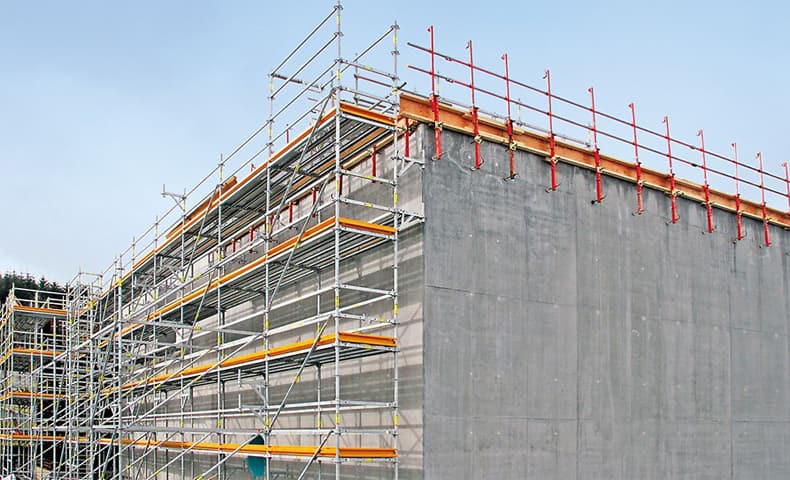
Builders are not the only ones to need a temporary work platform to construct or maintain a project. There are many different types of scaffolding structures to do the job, but four major types. In addition, within each type there can be the classification of light, medium or heavy duty scaffolding, depending on the job to be done. Light scaffolding holds just a few workers and hand tools; medium supports workers, hand tools and materials, while heavy duty is used for workers, hand tools and stored materials, which means it is strong enough to support sustained weight.
Here are the four major categories of scaffolding: –
- Self supporting scaffolds – these are structures that support their platforms with verticals that reach the ground. These legs are attached to footings that spread the weight and give them a sturdy foundation. Or they may be mobile, e.g. attached to castors so the whole can be moved when necessary. The five sub-categories are: –
- Carpenters bracket scaffolds that attach to a wall and hang from it.
- Bricklayers squares scaffold which is made of framed squares to support the deck.
- Tube and coupler scaffolds which may or may not be mounted on wheels.
- Fabricated frame scaffolds made from welded tubular frames to support the platform.
- Mobile scaffolds which may or may not be mechanised.
- Suspension scaffolds – these are supported overhead with a system of ropes and pulleys, or in some cases, a single rope. They may include a platform for several workers or a chair for one. Both can be raised and lowered by the user. There are four sub-categories within this category including:-
- Boatswains Chair, often used by window-cleaners of high rise buildings.
- Swing stage or double point which uses two ropes.
- Float, a suspended platform resting on parallel bearers.
- Catenary, a platform supported by parallel and horizontal ropes fastened to structural elements.
- Elevating Work Platforms (EWPs) – these include the use of a battery or motor for vertical movement to raise and lower workers and materials. Three sub-categories are: –
- Mast climbing platforms.
- Aerial Scissor platforms on a vehicle.
- Aerial platforms on a vehicle with a telescoping boom that rotates.
- Specialty Scaffolding – which is designed to take four times the intended maximum load plus its own weight. Six sub-categories include: –
- roof bracket scaffold which is a platform supported by two triangular supports
- pump jack scaffold, deck supported by verticals and support brackets that can be moved.
- ladder jack scaffold is a platform supported by brackets to which are attached ladders.
- trestle ladder scaffolds include outriggers to make it more stable.
- window jack scaffold is a deck supported by brackets protruding from a window opening.
- carpenter form scaffolds, which are attached directly to the building frame with brackets.
In addition, many of these sub-categories can be made from different materials, so there is plenty of variety to suit your needs.






